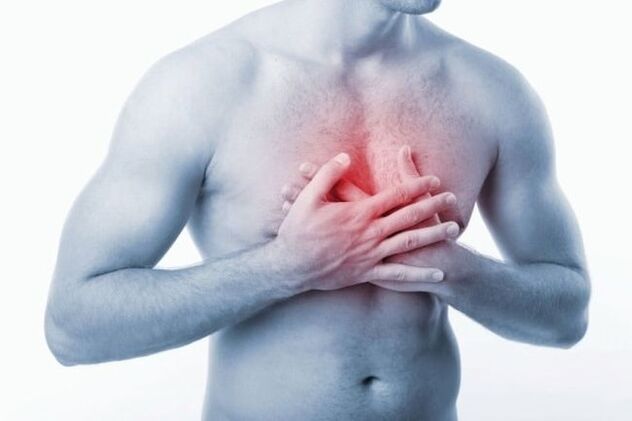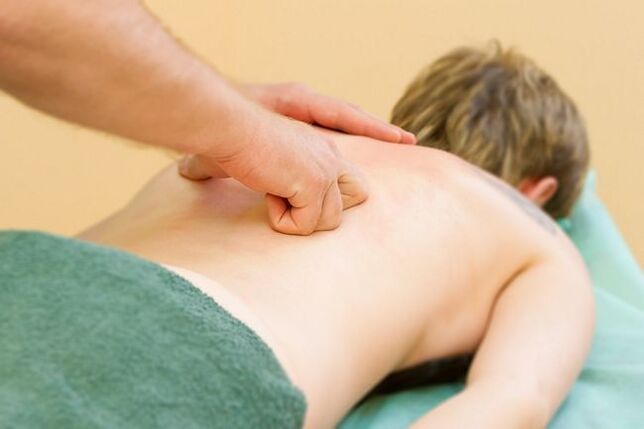Osteoma is one of the most common pathologies of the spine. It usually appears in many people over the age of forty, but it is more common in younger people. Osteoarthritis is included in ICD-10, its code is M42 (code M40-M43 - deforming back pathology)
Osteoma is a stratification of the discs, so they become flatter and reduce the overall height of the spine. Deformed discs lead to pinched nerves and pain. Osteosarcoma in the thoracic region is relatively rare, as this region, consisting of 12 vertebrae, is well fixed by the ribs and sternum. The disease usually affects the upper vertebrae of the organ.
Causes of thoracic osteonecrosis
This disease most commonly occurs in family members who frequently have osteonecrosis, but there are exceptions. The occurrence of the disease can lead to:
- congenital pathology of the spine;
- injury;
- constant vigorous physical activity;
- severe metabolic disorders;
- general muscle weakness;
- infections and frequent temperature changes;
- constant stress.
Osteochondrosis occurs in many women during menopause.
Signs of osteonecrosis of the thoracic spine
Symptoms of this disease can vary greatly, depending on the age of the patient, the extent of the disease, and the stage. During remission, the actual disease may not be felt, but during an exacerbation it is impossible not to notice it.

Pathological changes in the spine are manifested by the following symptoms:
- sharp or stabbing pain in the chest, in the lumbar spine (back);
- if the nerve roots that go out of the spinal cord (radiculopathy) are damaged, shooting pains, paresthesias and various sensory disturbances occur;
- Pain in the heart area, which does not go away after taking glycerol trinitrate;
- pulmonary syndrome, which can be identified by signs of oxygen starvation and poor ventilation;
- acute pain in the abdomen;
- pain from osteochondrosis of the thoracic spine without fever, as is common with back pain;
- pain syndrome increases with pressure on the vertebrae;
- myelopathy may develop. Myelopathy is characterized by altered sensitivity of the skin and muscles near the affected area of the spine.
Importance!Osteomas of the thoracic and lumbar regions often mimic diseases of internal organs. Patients may experience pain in the stomach, liver, and heart due to pinched nerves. Over time, "perceived" illnesses can actually emerge as a result of persistent inflammation.
If the patient feels pain in the internal organs, and pain is the only symptom, it is necessary to check the condition of the spine. So, for example, the tenth vertebra is responsible for the functioning of the kidneys and the general condition of the body. With his osteonecrosis, a person feels pain in the kidneys, quickly gets tired. That is why it is important not to self-medicate, as is often advised on various forums, but to consult a specialist.

Stages of thoracic osteonecrosis
The international classification has defined 4 stages (grades) of thoracic osteonecrosis, each with its own clinical picture:
1 degree.At this stage, the disease only arises because the disc loses moisture, the height decreases, the vertebrae come closer together and begin to press on the nerves. Patients may feel local pain syndrome in the affected vertebrae, sometimes with characteristic back pain. Pain occurs with activity and exertion, but certain exercises can reduce discomfort. Usually, grade 1 of the disease is taken for the common symptoms of fatigue, so people do not rush to see a doctor.
2 degrees.The vertebrae become unstable and cracks form on the arched vertebrae. Due to the increase in instability, both explicit and implicit side flows can occur, which can bring a lot of trouble in the future. Patients experience pain not only on exertion but sometimes in a static state (eg, lying on their side or on their back). Grade 2 osteonecrosis also has a common feature of general weakness, more fatigue, pain can be observed in the internal organs, in the extremities. Angina may occur.
3 degrees.The fibrous ring becomes thinner and thinner, causing a herniated disc. This disease causes some deviations in the functioning of internal organs, because the spine is in a state of curvature and severely limits movement, forcing the patient to perform positions with less pain. The pain syndrome is very strong, at this stage it is possible to form the spine with lens syndrome.
4 degrees.The vertebrae begin to grow in width, their processes are shed, and the remnants of the discs are also shed. Patients often report pain relief, but spinal mobility is also markedly reduced. The vertebrae approach each other, giving rise to and growing their roots, which reduces the spine's ability to depreciate. A person with advanced osteonecrosis has markedly lost height, his movement is restricted, curvature of the spine (scoliosis or scoliosis) is observed.
Against the background of osteochondrosis of the thoracic spine, various diseases of internal organs can form, therefore, it is dangerous to delay diagnosis and treatment.
Diagnostic method
The main radiographic signs of this disease are:
- Irregular contour of the disc;
- Corrugated edges of compatible panels;
- The hook-shaped processes are enlarged and pointed;
- Reduce the height of the intervertebral disc;
- Change the shape of the disc;
- Disc herniation (it's easier to identify anterior herniation);
- Appearance of bone-forming substances;
- The shape of the vertebral body is changed.
In certain cases, an X-ray contrast study is performed - the disc, which shows the following features:
- Irregular contour of the nucleus pulposus;
- In the advanced stage of the disease, the disc is completely contrasted;
- With significant destruction of the disc, a contrast medium is observed beyond its limits, sometimes falling into the spinal canal.
Consequences of osteonecrosis
If the disease is not treated, its progression is very rapid. But with successful treatment, the number of possible complications is very small. There are several main complications of osteonecrosis:
- Sciatica body pain
- Degeneration of the thoracic spine (and other parts)
- VSD
- Hearing or vision loss
- Tooth decay
- Migraine
- Lumbago
- Raw discs
- Spondylolisthesis disease
- Disabilities
- Bone pain
- Epithelial inflammation
The main treatment methods of osteochondrosis of the thoracic spine
Currently, the treatment of osteonecrosis in the chest is done by the following methods:
- Conservative treatment
- Surgical treatment
- traction

Medical treatment is based on several principles. The main thing is the fight against pain, as well as reducing inflammation. Therefore, the doctor uses anti-inflammatory drugs to eliminate the pain.
To improve the condition of the cartilage, doctors prescribe drugs to patients chondroprotectors.
Often, limitations in spinal movement are caused by overstretched muscles. To get rid of this disease, doctors prescribe muscle relaxants and antispasmodics.
To relieve pain, doctors recommend patients to use various ointments for bone resorption, creating a warming effect.
For the effective treatment of this disease, a controlled dose of the drug by a doctor is very important. The patient must remember that it is necessary to take the medicine according to the order prescribed by the doctor. Do not mix drugs or replace them with analogues without the consent of the attending physician.
In addition to medical treatment, the doctor prescribes acupuncture, acupressure, physical therapy, and massage therapy. All of these treatments should be discussed in detail with your doctor and should be performed by a qualified person.
In the early stages of the disease, the entire course of treatment of osteonecrosis of the thoracic spine is limited to physiotherapy exercises for osteonecrosis and some special exercises. Drug treatment includes the prescription of drugs that improve metabolism, as well as vitamin therapy.
Patients are advised not to do gymnastics without discussing it with their doctor. It should be borne in mind that in the acute phase of the disease it is impossible to exercise. Any exercise therapy chosen depends on the location of the damaged area in the spine. Folk remedies can also be used.
What to do with an exacerbation of the disease?
Acute exacerbations of osteonecrosis are always accompanied by pain. As such, treatment is primarily aimed at pain relief.
For this, NSAIDs are prescribed. They reduce the production of prostaglandins, which stimulate the nerve endings responsible for pain. In cases where these drugs are ineffective, blockade with a local anesthetic can be used. In addition, during an exacerbation of the disease, heavy physical exertion should be avoided, and rest should be given. Therefore, in such situations, exercise is contraindicated with thoracic osteonecrosis until a new decision is made by the attending physician.

Preventive measures
To prevent the development of degenerative diseases of the thoracic spine, you should regularly take care of your health.
The first step is to eliminate all factors that can provoke the formation of osteonecrosis, not forgetting the dangers of heavy physical exertion and maintaining correct posture.
Each person should have regular check-ups at a specialized medical station. If during the physical examination, the doctor discovers the main pathologies of the spine, the patient should immediately contact an orthopedist.
In order to prevent diseases, it is necessary to definitively treat diseases in time, this is especially important for diseases of the musculoskeletal system. After an injury, it is necessary to undergo mandatory rehabilitation.

Take care of your body: change your body's position more often during work to avoid hypothermia and hyperthermia, don't forget to check your health.
At home, people are not always able to keep their bodies in good shape, like at the gym. However, do not forget to strengthen your back muscles with a variety of exercises. So, for example, physical therapy exercises for osteonecrosis will help very well. The main thing is not to overdo it. And pictures and videos of the exercises are easy to find on the Internet.
The best prevention of any disease is a balanced diet. Your diet should include not only vegetables but also a variety of vitamins, which is especially important during the winter-spring period. To strengthen the back, you can massage, take medicine, swim.

























